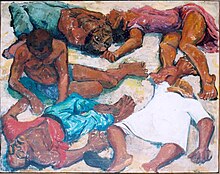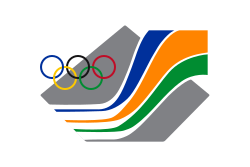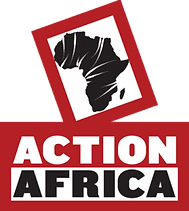Anti-Apartheid movement during the Civil Rights era

Connections with civil rights organizations
The origins of the anti-apartheid movement in the United States can be traced to the late 1940s, when apartheid laws were first enacted. Although anti-apartheid efforts did not gain much momentum during the beginning of the Civil Rights era, several organizations supported the defiance campaign in South Africa. In the early years, the Council on African Affairs (CAA) devoted to the liberation of Africans against colonialism. [6] Led by Alphaeus Hunton, the CAA published educational content and lobbied the federal government and the United Nations for economic disengagement from South Africa. The CAA, however, shortly decline in activity and eventually succumbed to anti-Communist government repression in 1955. [6]
Following the Sharpeville massacre in 1960, during which South African police opened fire on a group of unarmed protestors, there was a significant change in public opinion in the United States about South Africa. [7] The massacre fomented a connection between the civil rights movement, the defiance campaign for African liberation, and the resistance to the apartheid system in South Africa. However, the anti-apartheid movement was soon overshadowed by domestic issues, including the Cold War and resistance against the Vietnam War. [7]
Creation of the American Committee on Africa (ACOA)
The American Committee on Africa (ACOA) was the first major group devoted to the anti-apartheid campaign. [8] Founded in 1953 by Paul Robeson and a group of civil rights activist, the ACOA encouraged the U.S. government and the United Nations to support African independence movements, including the National Liberation Front in Algeria and the Gold Coast drive to independence in present-day Ghana. [9] The ACOA garnered support from civil rights groups such as the Congress of Racial Equality (CORE) as well as churches and labor unions. [10] During the 1960s, the ACOA participated in demonstrations, lobbying, and sit-ins to protest the United States’ governmental and business relations in South Africa. Most notably, the ACOA joined a union of churches to create the Washington Office in Africa as a permanent lobbying arm for relief projects in South Africa. [11]
American anti-apartheid activists advocated for a greater attention on apartheid as the South African Airways advertised flights from Johannesburg to New York City. [6] In 1969, a group of anti-apartheid activists, including the ACOA and Representative Charles Diggs Jr. (D-MI) challenged SAA's entry into the United States, claiming that such travel would violate domestic civil rights laws of nondiscrimination. [10] The case was subsequently taken to court, and though it remained unresolved, activists leveraged efforts at blocking SAA's federal route to opposing South Africa's broader apartheid rules.
Early divestment and sanctions
Under the Truman and Eisenhower administration, the U.S. government took a reactionary role against South Africa's apartheid system, with leaders accepting the legitimacy of white supremacy in an attempt to maintain the flow of governmental and business relations. [6] Support for the anti-apartheid movement primarily involved small groups of activists and had limited impact. The ACOA participated in civil rights groups such as the Congress of Racial Equality and the National Association of Colored People (NAACP) in pressuring businesses to divest investment from South Africa. [10] Throughout the 1960s, churches and civil rights groups also organized protests, boycotts, and litigation campaigns to oppose apartheid.
However, resistance to the apartheid system was outweighed by the prevailing U.S economic interests in South Africa. The United States was determined to secure South African uranium production and mutually beneficial trade relationships. Until 1958, the United States abstained from voting on UN resolutions concerning South Africa's discriminatory policies. [6] As hypocrisies of the U.S. government became apparent in the reaction to the Sharpeville massacre in 1960, Rep. Ron Dellums of California and Rep. John Conyers of Detroit introduced the first divestment legislation to the U.S. Congress in 1972, paving the way for subsequent campaigns against bank loans to South Africa. [9]











